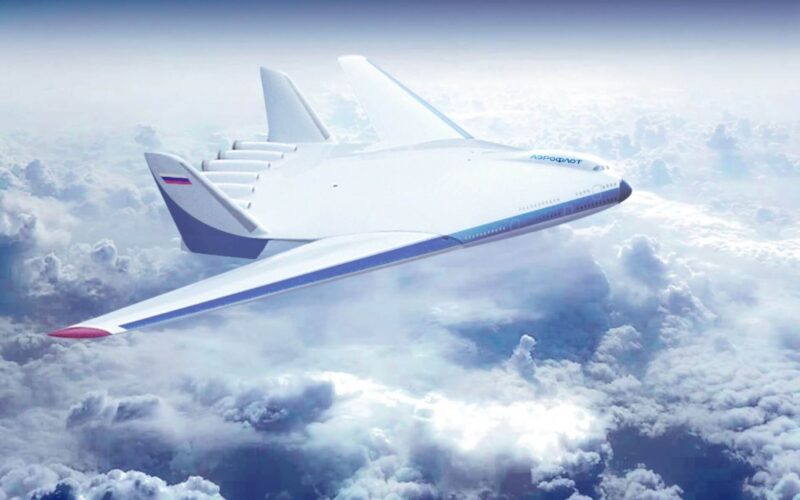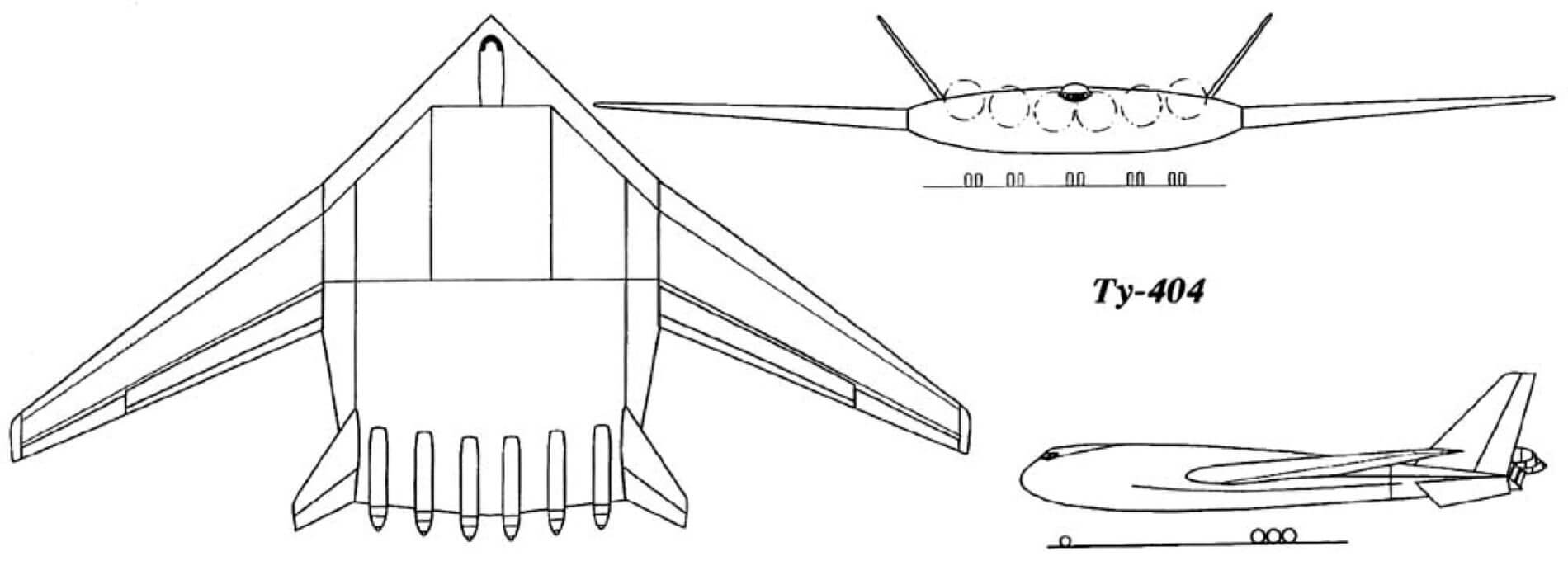Close your eyes and imagine the biggest passenger aircraft you can. Airbus A380, right? Now triple its size, add Aeroflot livery, and there you have it: Tupolev Tu-404, a stupendously large Russian project from the early 90s. Let’s take a closer look.
A lot can be said about the gargantuan airliner designs of late 80s and early 90s. They were based on the then-current trend of the growing hub-and-spoke model. The thinking was – there will be a lot of small airports and airliners ferrying people to large super-airports, connected amongst themselves by jumbo jets. You cannot increase the amount of planes taking off from a hub at the same time, so, in order to grow the flow of passengers, you have to increase the capacity of aircraft.
On the one hand, this thinking paved a way for a previous generation of wide-body jets, such as Boeing 777 and Airbus A340, and subsequently B787 Dreamliners and A350s, that themselves started to tear apart the hub-and-spoke model.
On the other hand, a school of thought emerged, which hailed the design and construction of new large double-decker airplanes of the future. As we know too well, those went nowhere and the only child of this idea – the glorious A380 – is on its last legs. Many others, though, remain in the blueprints and shiny models, presented at air shows, marvelled at, and then forgotten.
Economics, Tu-404 and its family
Although the majority of Tupolev’s civil aircraft were offshoots of military ones – Tu-114, Tu-124, as well as Tu-104 and its modifications being developed from various strategic bombers – an intention to compete on Western markets brought a need to design airliners from ground-up. This way, Tu-154, a semi-successful competitor to Boeing 727, appeared. By the early 80s, it already needed a replacement, which led to the development of Tu-204 – the first and the only specimen of the last generation of Soviet airliners.
One of engineers working on Tu-204 was Yuri Vasilyevich Vorobyev, whose previous work included modernisation of Tu-22M Backfire supersonic bomber. His finishing touches on the new airliner coincided with the end of Perestroika and the eventual dissolution of the Soviet Union, as the old system crumbled and government-controlled design bureaus started to be reorganized into private companies.
By 1991 – the last days of the USSR – Vorobyev was the deputy head of Tupolev’s department of civil aviation, and thus was befallen with the task of continuing modernisation of the country’s airplane fleet in the circumstances of complete economic turmoil. Having almost no means to do that but still seeking to keep the bureau’s position as a major aircraft manufacturer, the engineer turned his head towards the western trends.
Previously, Soviet long-haul airliners were exclusively built by Ilyushin: Il-62, Il-86 and the new Il-96 were supposed to compete with Boeing 747. But those were four-engined monstrosities of the bygone times and in the west the shining Boeing 777 has just started attracting orders. As an answer to that, Tu-304 entered the design phase: twin-engined wide-body airliner with an oval cross section, a new plane for Russia’s new era.
But the westerners were not content with massive twinjets, they were planning their A380s, Boeing NLAs and Lockheed Martin VLSTs. Connections between hubs had to grow thicker and the circumference of fuselages had to reflect that. So was born the Tu-404, the largest sibling of the “-04” family, whose eventual fate foreshadowed the meaning of the now-infamous error code.
Vorobyev headed the project personally, adding his experience with strategic bombers into the mix. Soon, two designs were drawn. A “normal” design was of a double-decker with a length of 86 meters and a wingspan of 77 meters, very similar to the A380 but considerably heavier. It had to be powered by either Rolls-Royce Trent or its domestic competitor, specially designed (but never built) NK-44. Very little is known about this version, as the second one – “flying wing” – was considered as having more potential.
Logically, if you have to build a super-wide fuselage to accommodate rows and rows of passengers, why not make it in the shape of a wing? The design scheme with lifting fuselage was semi-forgotten since the 40s, but saw a small resurgence in the 80s, including Soviet EKIP project.
The aircraft with this feature was supposed to be powered by six turboprops of 12000 kgf each (presumably, some version of Kuznetsov NK-12), making it less fuel efficient than the jet version, but reducing the price and increasing availability. Its passenger compartment, comprising one-third of 110 meter wingspan, was to be divided into six double-decked sections with 1214 seats in all-economy configuration. How exactly that would be done remains a mystery, as the only available blueprints contain very little information.
Presumably, flying in an enclosed box with just a small number of windows on the forward-facing wall, with some of the world’s noisiest turboprops houling above you, jam-packed into an all-economy compartment would not be the best flying experience. On the other hand, one can find information that Tu-404 was supposed to have sleek interior design, house a cinema theatre and feature other high-class amenities for everyone. Given decent noise isolation, it could have been turned into something bearable and even pleasant. We will never know.
Tu-404 (Image: Testpilot.ru)
The fate of Russian “Flying wings”
In the Russian part of the internet one can find several mentions that Tupolev discussed the design with several potential buyers, but the details are scarce and sound a lot like a rumour. The only material legacy of the Tu-404 so far is the model of the aircraft, paraded around in several exhibitions between 1993 and 1997.
It is difficult to trace the legacy of the aircraft, as a lot of 90s Russian flying wing designs are heavily intermixed. Another, slightly smaller unnamed airliner of this layout was designed by Tupolev bureau at the same time, either as a continuation of the 404, or as a completely different aircraft. This one had four turbofan engines between the tail fins and its models and blueprints are often erroneously attributed with the number “404”.
Later, in the mid-to-late 2000s several descriptions of PAK DA – the next-generation stealth bomber and transport aircraft – started floating around. It too was designed by Tupolev on the basis of some earlier project – maybe Tu-404, maybe not. The aircraft was finally revealed in 2017 as PAK VTA Il-106, blended wing body supersonic super-heavy transporter with a whole set of sci-fi features that made half of aviation geeks salivate, and another half to roll their eyes. This one went nowhere too, as in 2020 the PAK VTA was revealed to be something completely different and decidedly less impressive.
Vorobyev himself spent subsequent years as a director of Tupolev’s mid-range airliner programs, continuing to work on improvements of Tu-204 until passing away in 2002. His most ambitious project fell into obscurity, as did many of its western peers, relegating a vision of super-sized jumbos with 1000+ seats to the realm of alternative history.


